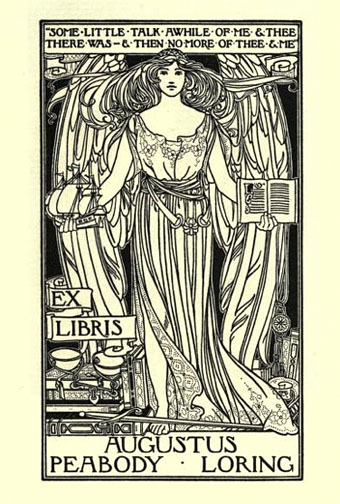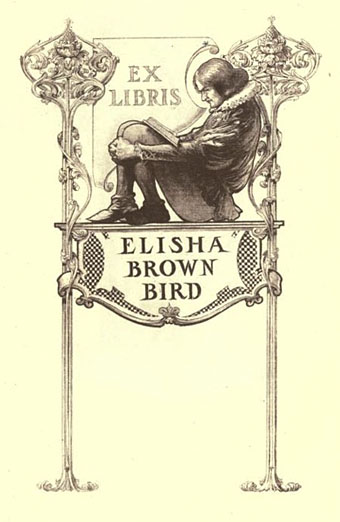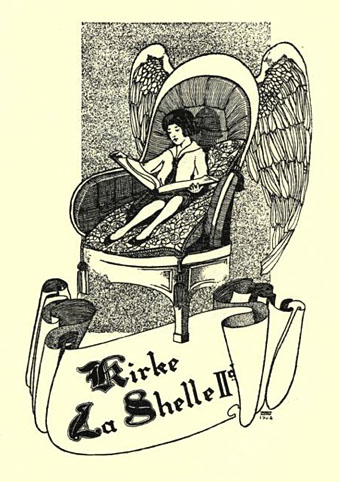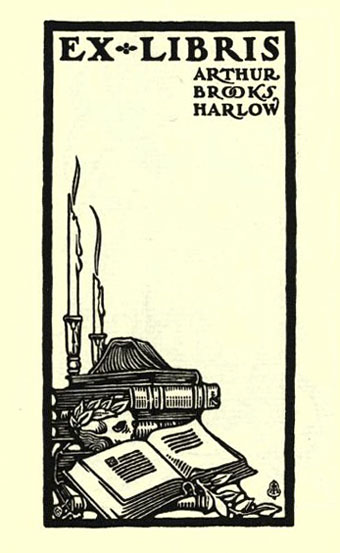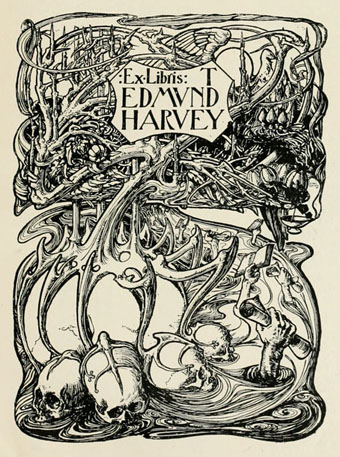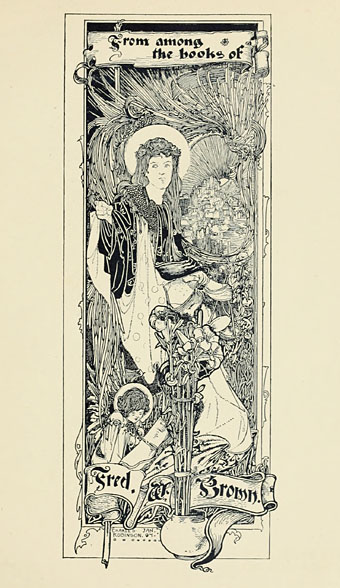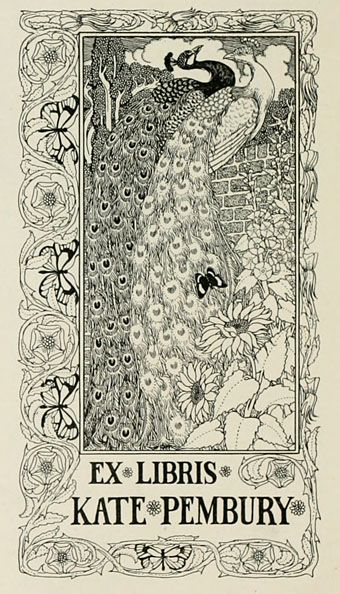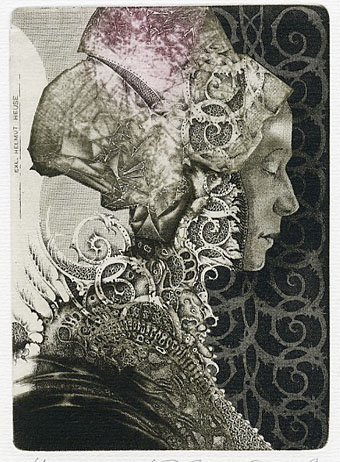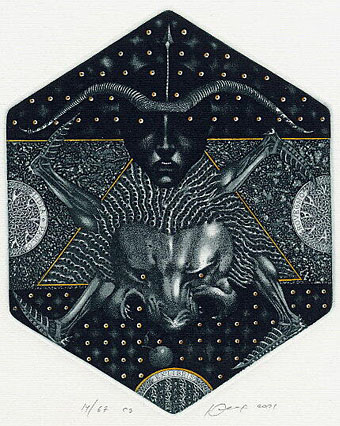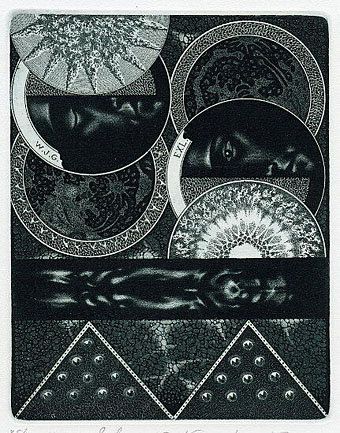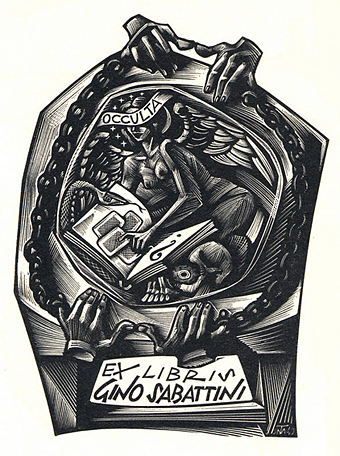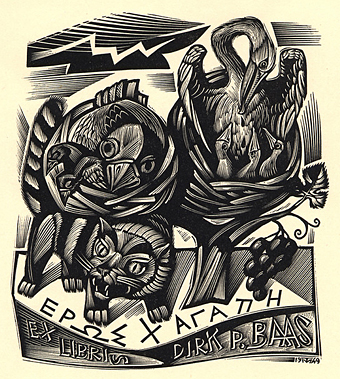Amy M Sacker.
The work of four bookplate artists printed by the Troutsdale Press, Boston, in 1903 and 1904 is contained in these small volumes at the Internet Archive. None of the artists featured are names I’d come across before. Amy M Sacker’s work is of note for being that of a woman given equal status among her male colleagues, and a nice clear-line style reminiscent of Walter Crane. The short text at the beginning of her volume runs through the history of the female contribution to bookplate art, drawing the conclusion (in the usual chauvinistic terms of the period) that women can indeed compete with men at this game.
• Amy M Sacker | Elisha Brown Bird | F Arthur Jacobson | Adrian J Lorio
The artist’s own bookplate by Elisha Brown Bird.
F Arthur Jacobson.
Adrian J Lorio.
• At the LA Times: What’s sticky and can be found in old books?
Previously on { feuilleton }
• Bookplates from The Studio
• Yuri Yakovenko bookplates
• Tranquillo Marangoni bookplates
• Book-plates of To-day
• Louis Rhead bookplates
• Pratt Libraries Ex Libris Collection
• The Evil Orchid Bookplate Contest
• The art of Oleg Denysenko
• David Becket’s bookplates

